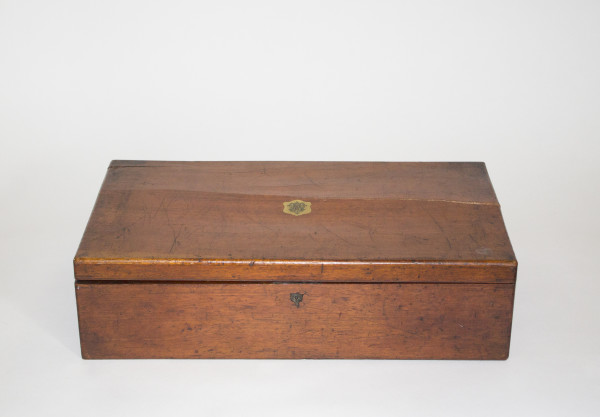-
Artist: Thomas Milner & Son
1791 Thomas Milner was bound as an apprentice to his father in the trade of tinsmith and brazier for eleven years. In those eleven years he was not allowed to marry, take a drink or take a day off without permission. He was provided with meat, drink, washing, lodgings and wearing apparel. His wage was sixteen pence a year. He learned well and began to manufacture iron coffers and strong boxes.
1814 Formed his company.
1824 He secured orders for coffers and strong boxes from the Duke of Wellington, as well as an official contract to supply the War Office.
1830/5 Thomas moved from Sheffield to Liverpool and set up the firm of Thomas Milner and Son, where he was a pioneer in the development of fire resistant safes and much involved in taking out patents, demonstrating the excellence of his safes by placing them in the centre of huge bonfires.
1834 Invented the "patent safety-box," as safes were originally called.
1840 Milner was granted his most important patent, on the utilization of the water of crystallization of various salts as a means of protecting documents, etc. This patent covered the principle still used by manufacturers of safes throughout the world.
The Milner Safe Company
The founder, Thomas Milner, originally a tinsmith and metal box-maker from Sheffield, set up a safe manufactory in Liverpool in 1830 where he set about producing tin-plate and sheet iron boxes with his newly patented fire-resisting composition and was employing 35 men. From 1846, he moved on to strong plate iron safes and chests. Thomas died in 1849 leaving his son William as a partner in the newly named Milner & Son and so rapidly was the company growing that by 1851 they were employing 110 men.
By this time they had developed and patented a gunpowder-proof and unpickable key lock in conjunction with Hobbs & Co..
His son-in-law Daniel Rowlinson Ratcliff had by this time joined the company as a partner. Considerable animosity had developed between Milners and George Price, a rival safe-maker from Wolverhampton with each indulging in very unprofessional practices. This was to lead to an incident when each party was publicly testing the others safes with gunpowder when Milner’s representative was over zealous in the charge he placed in one of Price’s safes resulting in a fatality. Shortly after this incident William Milner retired.
In 1874, now called the Milner Safe Company, the factory was employing 480 men. By this time they were the largest manufacturer of safes and other security work in the world, a fact which they claimed in the London Trades Directory of 1900.
Most familiar among the company’s products must be what is usually referred to as the square “church door Milner”- which is correctly known as the List 2 and which in the earliest models carried a cast iron moulding on the face of the door shaped like a Gothic arch. The heavier range of cash safes such as the List 3, 4 and 5 were still being made in the 4-corner bent banded body right into the 1900’s by which time every other maker had changed to the fully 12-corner bent body. In 1911, five Milner safes were supplied to Harland & Wolff for installation on the Titanic.
In 1955, Milners were acquired by Hall Engineering Products and were eventually merged with the Chatwood Safe Company to become known as Chatwood-Milner. The factory at Speke was closed in 1964 with all production moving to Chubb which had taken over Chatwood-Milner in 1959.
All object images © LB Laub. Please do not use without permission.
Powered by Artwork Archive

